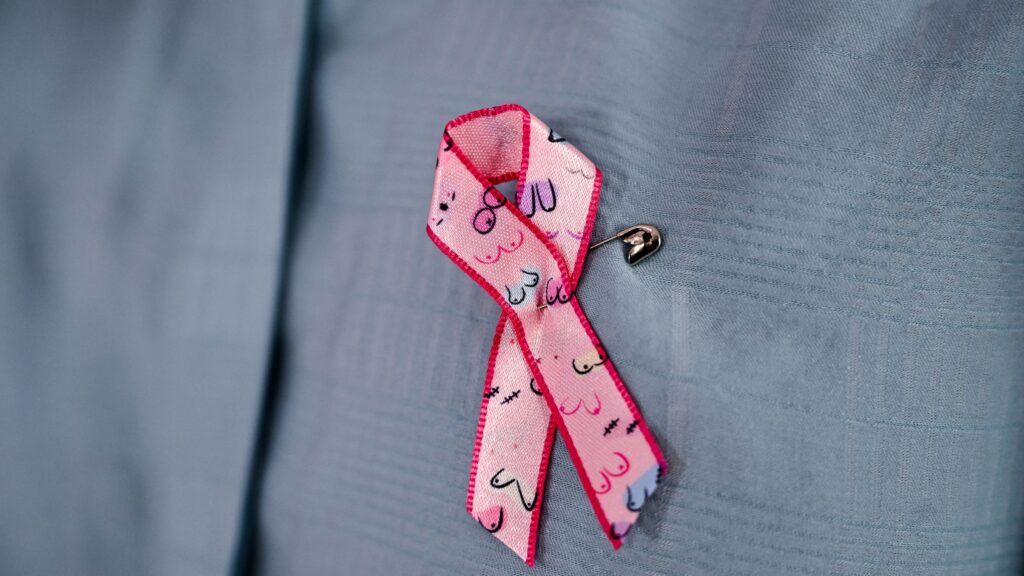Everyone knows the universal symbol of breast cancer: the pink ribbon. Promoted by the Union for International Cancer Control, it pops up everywhere, from retail shops to government offices, each October for Breast Cancer Awareness Month. Police departments have pink ribbons on their vehicles to show solidarity; one town near me even has an entirely pink police cruiser. And children as young as my own pre-teen daughters recognize a looped pink ribbon as a symbol of support for breast cancer patients and survivors.
Of course, the color of the ribbon is strongly associated with girls and women, and almost all public health awareness campaigns by government bodies and nonprofit organizations on radio, television, online and in print are targeted toward women. So are fundraising campaigns selling pink-ribbon merchandise to raise funds for breast cancer research. But this creates a false public impression: that women are the only ones who can get breast cancer.
advertisement
According to the Centers for Disease Control and Prevention, almost 1% of breast cancer patients in the U.S. are male, and the American Cancer Society’s annual statistics for 2023 show that men who develop breast cancer are more likely to die from it than women. These worse outcomes may be due in part to less screening, early detection, and treatment, driven by lack of awareness. There are also fewer clinical studies of male breast cancer; as a 2019 study in JAMA Oncology noted, “Survival differences between male and female patients with breast cancer have been reported, but the underlying factors associated with the disparity have not been fully studied.” Black men show higher breast cancer risk than white men, and lower-income men have worse outcomes.
According to the Dana-Farber Cancer Institute, “For the roughly 2,600 men who are diagnosed with breast cancer in the United States annually, the news can be very surprising.” The American Cancer Society estimates that in 2023, “About 2,800 new cases of invasive breast cancer will be diagnosed. About 530 men will die from breast cancer.” Of course, these statistics are limited to the United States. I do not know whether primary care physicians in the developing world think to screen for it, let alone whether male patients think to ask for screening.
Mention of breast cancer in men tends to be deeply buried on the websites of advocacy organizations.
advertisement
In an April 2023 NIH study, researchers found that 61.1% of participants were unaware of the possibility of breast cancer in men. Evaluation of the relationship between awareness and gender revealed that women were more knowledgeable than men. Educational status also had a significant influence on awareness.
Lack of knowledge transcends not only gender, but age. Last month, while interacting with high school students in Acton, Massachusetts who were making art for hospital patients, I introduced the topic of breast cancer in men. Most were shocked to learn that men do get breast cancer. Some of these students aspire to work in health care but are growing up around noncomprehensive and exclusionary health care campaigns, like breast cancer awareness campaigns that marginalize male survivors and keep males out of the loop about the possible signs and early diagnosis. Raising public awareness of this issue by redesigning the iconic pink ribbon will enable men to be diagnosed at an earlier stage and thus better respond to treatment.
There is hope. Some best practices can be gleaned from the Dana-Farber Cancer Institute’s Program for Breast Cancer in Men, which offers support to male breast cancer patients and survivors. These established support systems for male cancer survivors can promote a new face for breast cancer awareness.
Even though men make up only a small fraction of breast cancer patients and survivors, their number is not zero. We can build on advocacy like that of Jose Pablo Leone, M.D., a Dana-Farber breast cancer physician who is encouraging the inclusion of male patients in breast cancer trials.
Breast cancer awareness campaigns, which start with the design of the ribbon, need to change to show solidarity to survivors of all genders and allyship with their families. A new ribbon, mostly pink with a patch of blue or a blue strip around the edge, would be ideal as the new face of breast cancer. This subtle design change would acknowledge that although males are diagnosed with breast cancer, it is still far more prevalent in women.

One might argue that the ribbon is trivial, but its power is globally significant. Many communities may not have an easy phrase for “breast cancer” in their local languages but recognize the ribbon. It is simple to understand by anyone and makes it easier to target awareness in all communities.
The breast cancer advocacy movement has, in recent decades, transformed breast cancer from a malady that could barely be whispered about to one that everyone is comfortable discussing. Now it’s time to turn that considerable power to helping a marginalized group of people with breast cancer. Redesigning the ribbon would make it clear that men matter too. Male breast cancer patients and survivors deserve to share their stories, one ribbon at a time.
Vivian Kobusingye Birchall is a producer and host of “Health Care Blind Spots” on ActonTV in Massachusetts. She is currently a masters student in media, medicine, and health at Harvard Medical School.

